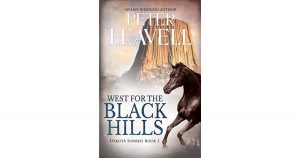
Image by Zigmars Berzins from Pixabay
My dog’s Instagram account has an insane number of followers. He’s cute, cuddly, and doggone it if Winston doesn’t outsmart me time and time again. Animals have personalities of their own. But how should we use a pet in our novel?
Softer side. After all the action in the world’s greatest spaghetti western, The Good, The Bad, and The Ugly, the main character reclines with a kitten. Both are comfortable in each other’s company and just chill. This softer side is a unique dynamic in a film of cruelty. A breath of fresh air.
Pets listen. So we talk to them. In Turner and Hooch, the main character played by Tom Hanks wrestles with the dog, both literally and emotionally. Yet, we learn so much of the main character’s deep personality, his wants, and his ideas. Because people tell their pets far more than they would another human, an animal can be a fantastic way to show a character’s emotions rather than telling them.

Revenge. In John Wick, John’s dog is hurt in the first few minutes of the film. And oh, my goodness, you’re completely okay with his rampage of revenge. Pets are innocents. They can’t care for themselves; their only job is to be cute and add comfort. As well as some measure of care. Bad guys who hurt animals are just plain evil.
Pets are their own character. Give them personality. Life. Expand your manuscript with an animal that interacts and plays a role. Many readers are in a place in their life that they will relate to the animal more than they do humans. Draw readers in with a nuanced animal.
Weird pets. It’s a well-known fact that after a short time, the pet and the owner begin to look alike. Take this opportunity to match up your character to a vulture. Or a turtle. I knew a college student who resembled his piranha. And why would she house a deadly snake? Why does he let tarantulas roam about the house? It’s hilarious when your character and his horse have the same laugh.
Adding a pet to your novel can be a rich source of content. Don’t be afraid to bring in that loveable ball of fur. Or scales. Or exoskeleton. Your readers will thank you for your effort.
West for the Black Hills
Philip Anderson keeps his past close to the vest. Haunted by the murder of his parents as they traveled West in their covered wagon, his many unanswered questions about that night still torment him.
His only desire is to live quietly on his homestead and raise horses. He meets Anna, a beautiful young woman with secrets of her own. Falling in love was not part of his plan. Can Philip tell her how he feels before it’s too late?
With Anna a pawn in the corrupt schemes brewing in the nearby Dakota town, Philip is forced to become a reluctant gunslinger. Will Philip’s uncannily trained horses and unsurpassed sharpshooting skills help him free Anna and find out what really happened to his family in the wilderness?

Peter Leavell, a 2007/2020 graduate of Boise State University with a degree in history and a MA in English Literature, was the 2011 winner of Christian Writers Guild’s Operation First Novel contest, and 2013 Christian Retailing’s Best award for First-Time Author, along with multiple other awards. An author, blogger, teacher, ghostwriter, jogger, biker, husband and father, Peter and his family live in Boise, Idaho. Learn more about Peter’s books, research, and family adventures at www.peterleavell.com

